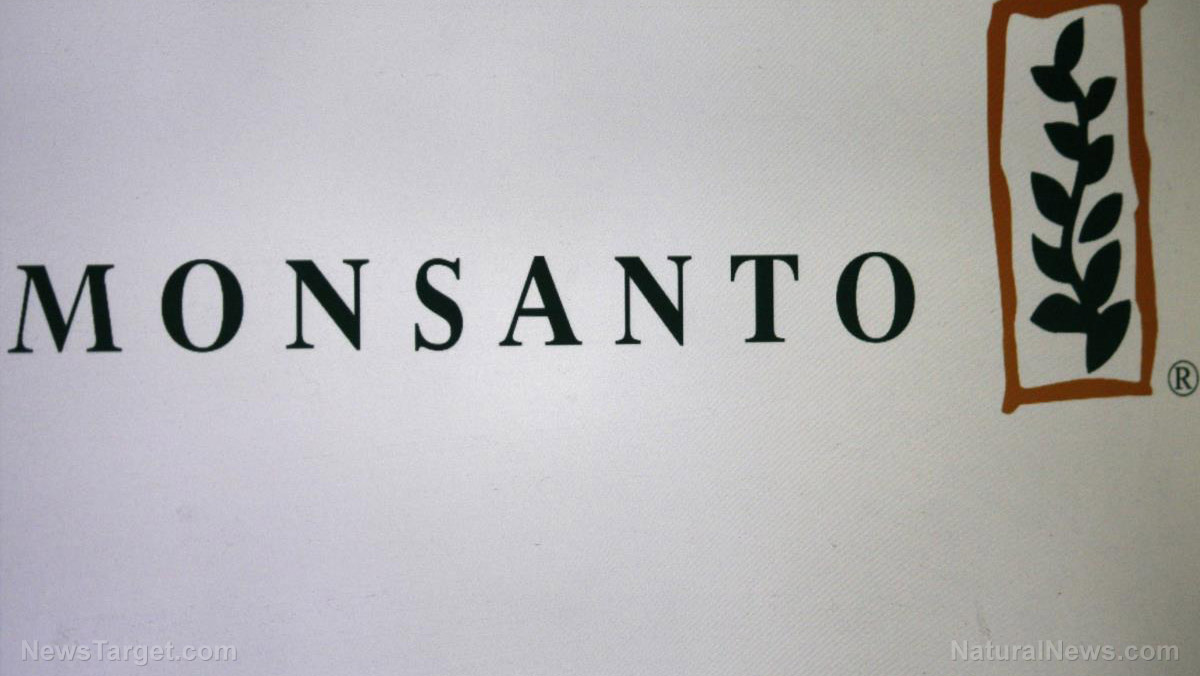GMO HUCKSTERS: How the biotech industry controls the media narrative and smears anti-GMO activists
10/25/2017 / By Lance D Johnson

The public relations arm of the biotech industry needs one thing — for consumers to believe in the safety of GMOs and agrochemicals. They want consumers to trust biotech experiments, even though they have tortured human health throughout history. Agent Orange, DDT, dioxin, saccharin, PCBs, aspartame, polystyrene, and glyphosate all pose severe health risks.
This is why corporations such as Monsanto pay professors to travel, write, and speak on behalf of their genetically modified organisms and agrochemicals. The biotech industry also organizes conferences to indoctrinate journalists and scientists on how to best promote GMOs and agrochemicals. As the carcinogenic composition of agrochemicals such as glyphosate is revealed, the biotech industry only seeks to control the media narrative going forward. Real, critical thinking and scientific oversight are not allowed; dogma and coercion guide policy and perception of GMOs.
If they cannot control a journalist or a professor, the biotech industry will resort to mafia-style tactics to get their way. Monsanto purchases the journalists they can manipulate and intimidates the ones who refuse to be controlled.
For instance, when NPR’s investigative journalist Monica Eng published a story about Monsanto quietly paying a professor at the University of Illinois to travel, write and speak about GMOs, she faced extreme backlash. Eng, with 30 years experience, couldn’t believe the attacks that came forth. A smear PR campaign tried to defame her character and credentials. Ultimately, the Monsanto-paid University of Illinois denounced her journalism credentials and labeled her an “anti-GMO activist.”
“… I don’t think I have ever seen a group so intent on trying to personally attack the journalist covering the issue,” Monica Eng recalls.
Eng uncovered documents that proved that Professor Bruce Chassy received payments from Monsanto to promote GMOs and lobby the government. The colluding Bruce Chassy advised Monsanto to deposit the money with the University of Illinois so records would be shielded and the conflict of payment could be concealed. This is how Monsanto operates. They propagate through trusted academic channels and then conceal their money trail so it all appears as legitimate science education.
This is just a sampling of how the biotech industry operates. As of now, the Inspector General for the Environmental Protection Agency is investigating a matter of collusion between Monsanto and a former high ranking EPA official. Eyes are opening, especially now that California is adding a cancer warning to Monsanto’s popular glyphosate-based product Roundup.
Danny Hakim, an investigative reporter with seventeen years experience working for the New York Times is another truth-teller who has faced the intimidation tactics of the biotech industry. After publishing articles critical of the agrochemical industry, Hakim faced targeted, defamatory hit pieces from well-known biotech industry websites such as the American Council on Science and Health and the Genetic Literacy Project. These sites published hit pieces, titled “Glyphosate: NYT’s Danny Hakim is Lying to You” and “Why Danny Hakim’s New York Times GMO expose misleads.” These biotech publishers are there for only one reason: To defame any dissent and halt true scientific debate. Lawyers have documented that both the Genetic Literacy Project and the American Council on Science and Health are financially propped up by the biotech industry to “shame scientists and highlight information helpful to Monsanto and other chemical producers.”
“The industry’s PR campaign to reframe the GMO debate and intimidate journalists through harassment and name-calling has been remarkably successful in my view,” says journalism professor Michael Pollan. “I think this is partly a function of the political and public relations naiveté of many of my fellow science writers.”
The biotech industry also funds conferences to purchase the loyalty of scientists and journalists. At the conferences, journalists and scientists are instructed on how to respond to debates about GMOs and the toxicity of glyphosate. Organizers of these events call the conferences “biotech literacy boot camps” and journalists are referred to as “partners.” Kevin Folta of the University of Florida, Jon Entine of the Genetic Literacy Project, and Bruce Chassy of the University of Illinois are the organizers of these events, which have taken place at the University of Florida in 2014 and at the University of California-Davis in 2015. All three organizers have been exposed as industry insiders for Monsanto, who have taken money to promote Monsanto’s experiments. Their goal is to persuade people that GMO crops are needed to feed the world and aren’t risky enough to require labeling. They strategically locate conferences in key states to win political battles over GMO labeling laws. The conferences teach journalists that anyone who questions the safety of GMOs is “anti-science.”
Gary Schwitzer, Associate Professor at the University Of Minnesota School Of Public Health, says, “Far too many journalists are sliding down the slippery slope of attending conferences that are sponsored by entities with financial interests. This practice changes journalism [into] another form of pay-for-play.”
The mass manipulation of the food supply at the genetic level and the perpetual application of agrochemicals is an ongoing experiment with real life consequences. Weak journalists are brainwashed to accept it and are further dumbed down by biotech industry conferences so they will never ask tough questions. Paid-off industry insiders with Ph.D.s are out promoting GMOs and hiding the money trail. Politicians are lobbied until they give in to the industry’s demands. All this is going on while the real science is vilified and retracted, and the truth tellers are defamed.
For more information, visit Biotech.news.
Sources include:
Tagged Under:



















